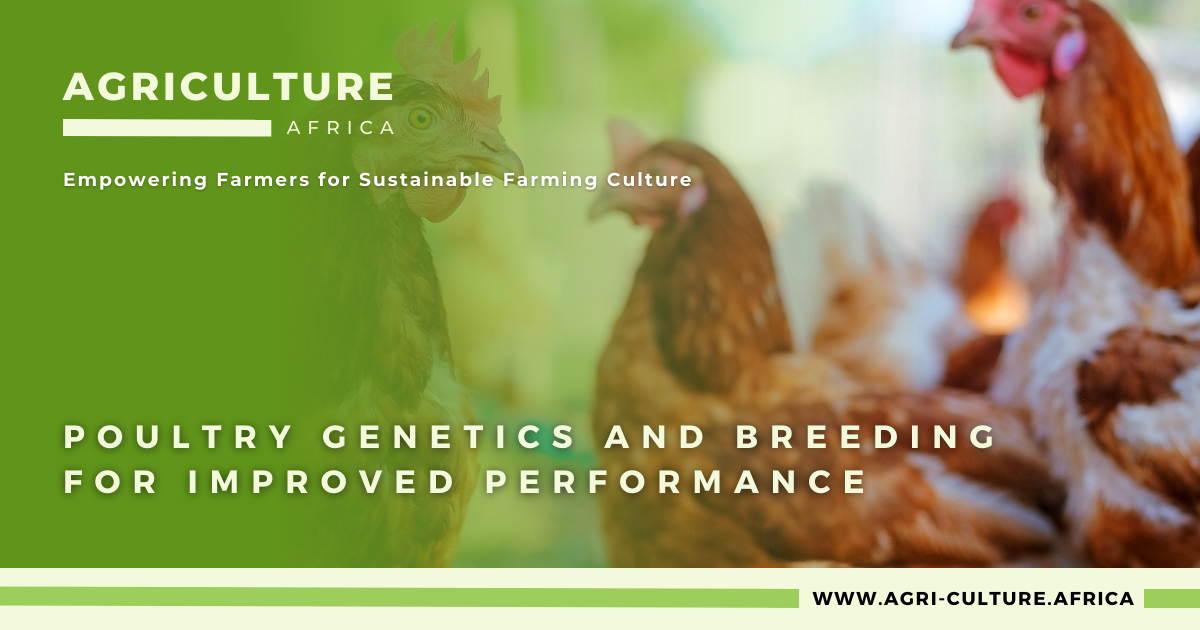Poultry Genetics and Breeding for Improved Performance: A Comprehensive Guide
Unlock the Potential of Poultry Breeding to Boost Your Flock’s Productivity
Discover how genetics can be used to improve poultry performance and productivity. Learn about the most important traits to select for, genetic selection tools, and more.
Poultry genetics is important in poultry breeding because it can be used to improve bird performance and productivity. Selecting birds with desirable traits, mating them, and evaluating the offspring to identify the best birds for further breeding are all part of breeding programmes. Selective breeding can improve egg production, growth rate, and disease resistance, all of which are important traits. Technology advancements have enabled breeders to more accurately and efficiently select birds with desirable traits, making it easier for them to produce superior birds. Understanding poultry genetics is critical for developing breeding programmes capable of meeting the growing demand for poultry products.
What is Poultry Genetics?
Poultry genetics is the study of how traits in poultry are passed down through generations. Physical traits such as feather colour, egg colour, and body size are examples of characteristics, as are production traits such as egg-laying, growth rate, and feed conversion efficiency. Understanding poultry genetics is essential for developing breeding programmes that produce birds with desirable traits.
Poultry Breeding
Poultry breeding is the process of selecting birds with desirable characteristics and breeding them to produce offspring with those characteristics. The goal of breeding is to produce birds that are more productive and productive than their parents. Selection, mating, and evaluation are the three steps in a breeding programme.
- Selection entails selecting birds with desirable characteristics, such as a high egg-laying capacity or a rapid growth rate, and breeding them to produce offspring with those characteristics. Birds with superior characteristics are referred to as “elite” birds and are used as breeding stock.
- Mating refers to the process of selecting birds for breeding based on their genetic makeup. Inbreeding, linebreeding, and outcrossing are all mating strategies. Inbreeding is the mating of closely related birds in order to fix desirable traits. Linebreeding is the practise of mating birds with a common ancestor in order to preserve desired traits while reducing the risk of inbreeding depression. Mating unrelated birds to introduce new genetic material and increase genetic diversity is known as outcrossing.
- Evaluation entails assessing the offspring’s performance and selecting the best birds for further breeding. To determine which birds have the most desirable traits, traits such as egg-laying capacity, growth rate, and feed conversion efficiency are evaluated.
Poultry Genetics of Egg Production
- Egg production is a critical trait in poultry breeding. The genetics of egg production are complex, involving multiple genes. Egg production is influenced by traits such as sexual maturity age, egg size, and frequency of egg laying.
- Age at sexual maturity: Genetics influences the age at which birds reach sexual maturity. Early maturing birds have a higher egg-laying capacity than later maturing birds.
- Genetics also has an impact on egg size. Larger eggs have a higher egg-laying capacity, but they also require more resources to produce.
- Egg-laying frequency: Genetics influences how frequently birds lay eggs. Birds that lay eggs frequently have a greater egg-laying capacity than birds that lay eggs infrequently.
Poultry Genetics of Growth Rate
- Growth rate: Another important trait in poultry breeding is growth rate. Growth rate genetics is complicated, with multiple genes involved. Feed efficiency, muscle development, and skeletal development all have an impact on growth rate.
- Feed efficiency refers to a bird’s ability to convert feed into body weight gain. More feed-efficient birds require less feed to reach a target weight than less feed-efficient birds.
- Muscle development: Genetics also has an impact on muscle development. Birds with greater muscle mass grow at a faster rate than birds with less muscle mass.
- Skeletal development: Skeletal development is essential for muscle growth and overall bird health. Birds with strong, healthy skeletons grow faster than birds with weak, unhealthy skeletons.
Poultry Genetics of Disease Resistance
- Disease resistance: Another important trait in poultry breeding is disease resistance. Disease resistance genetics is complicated, with multiple genes involved. Traits such as immune system function, disease tolerance, and resistance to specific diseases all influence disease resistance.
- Immune system function: The immune system is essential in fighting disease in birds. The effectiveness of the immune system can be influenced by genetics, making some birds more resistant to diseases than others.
- Disease tolerance: Some birds may not be completely immune to a disease, but they may be more resistant to it. Tolerance refers to a bird’s ability to withstand a disease without experiencing severe symptoms or dying.
- Resistance to specific diseases: Certain genetic traits can make birds more resistant to specific diseases. For example, some birds may be more resistant to avian influenza or Marek’s disease than others.

